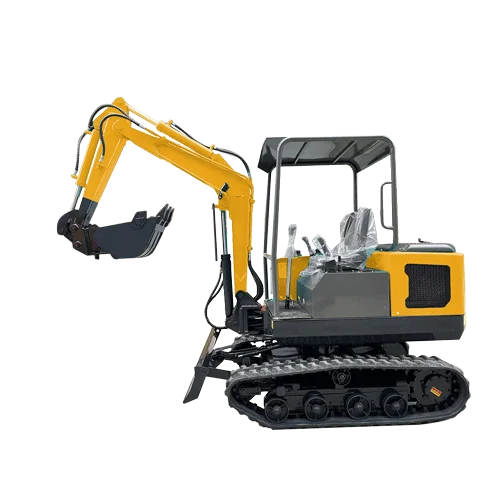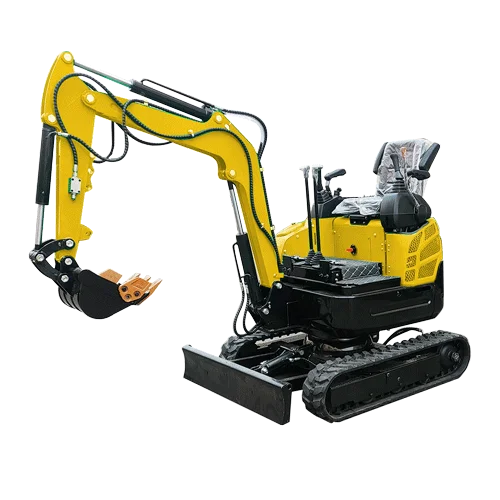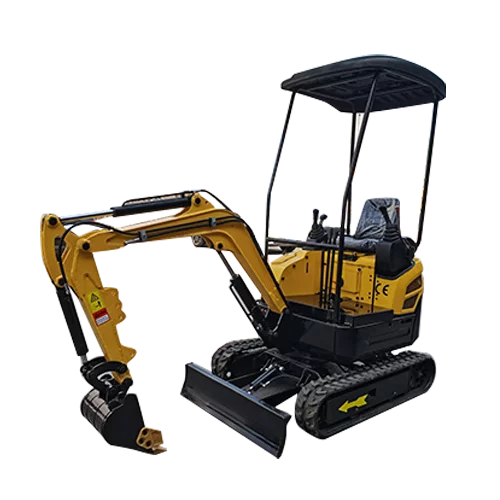Bienvenido a mi blog
Antes de sumergirnos en el contenido, me encantaría que te unieras a mí en mis plataformas de redes sociales, donde comparto más ideas, participo con la comunidad y publico actualizaciones. Así es como puedes conectar conmigo:
Facebook:https://www.facebook.com/profile.php?id=100087112105480
LinkedIn:https://www.linkedin.com/showcase/99327366/admin/dashboard/
Empecemos nuestro viaje juntos. Espero que encuentres el contenido aquí perspicaz, atractivo y valioso.
Índice
Introducción

In urban construction, landscaping, and other specialized sectors, maneuvering in tight spaces is often unavoidable. This is where the best small excavators come in. These machines are designed to be compact, yet powerful enough to handle a variety of tasks efficiently, even in confined environments. Whether you’re working on a small construction site, digging near buildings, or in a densely packed area, a small excavator can be the key to success.
In this guide, we will explore the best small excavators for tight spaces available in 2024. We’ll cover essential features, provide a detailed comparison, and answer common questions to help you make an informed decision.
What Makes the Best Small Excavator for Tight Spaces?
When choosing the best small excavator for tight spaces, several factors should be considered. Size is, of course, the most important consideration. These machines need to be compact enough to fit into limited spaces while still providing the power needed for effective digging. Additionally, a good small excavator will have excellent maneuverability, precise control, and versatile attachments that can adapt to various tasks.
Other important aspects include the weight of the machine, lifting capacity, digging depth, and fuel efficiency. The best small excavators will offer a balance between these features, ensuring that the machine can handle the job without compromising on agility or power.
Key Features to Look for in the Best Small Excavators for Tight Spaces

When comparing models of best small excavators for tight spaces, certain key features will help you determine the most suitable choice. Here’s a breakdown of the most important aspects:
Compact Design and Size
A small excavator must be able to access hard-to-reach areas, making a compact design essential. Models with a narrow width are easier to transport through gates, doorways, and alleyways. Consider the dimensions and ensure they suit your specific work environment.
Hydraulic Power and Digging Depth
Hydraulic performance is critical for excavators. A well-powered machine will dig deeper and perform more efficiently. While compact, the best small excavators still need sufficient hydraulic force to dig trenches, move dirt, or demolish small structures.
Maniobrabilidad y estabilidad
For tight spaces, maneuverability is just as important as digging power. Small excavators should be easy to control in narrow or confined areas, offering excellent precision. Stability, especially when operating on uneven ground, is also a vital factor to ensure safety and performance.
Accesorios versátiles
Small excavators that allow easy swapping of attachments can be particularly valuable in tight spaces. Attachments like buckets, augers, or grapple arms extend the functionality of the excavator, making it suitable for different tasks on a single project.
Confort del operador
Operator comfort may not always be at the top of your list, but it plays an important role in productivity, especially for longer work hours. Look for an excavator with a comfortable cabin, good visibility, and easy-to-use controls.
Top Models of the Best Small Excavators for Tight Spaces in 2024

To help you choose the best small excavator, here are some general specifications that make these machines ideal for navigating tight spaces. The following table outlines the advantages and suitable applications of small excavators based on different attributes:
| Característica | Advantage | Suitable Scenarios |
|---|---|---|
| Diseño compacto | Small size allows access to narrow or confined spaces | Landscaping, urban construction, narrow pathways |
| Hydraulic Power | Provides sufficient force for digging and lifting | Digging trenches, foundation work, small demolitions |
| Maniobrabilidad | Easy to control and navigate in tight areas | Excavation in urban areas, around buildings, tight job sites |
| Accesorios versátiles | Ability to adapt to different tasks | Excavating, lifting, trenching, soil compaction, and more |
| Confort del operador | Ensures better productivity during long shifts | Extended work hours, detailed operations in confined spaces |
These general features and advantages highlight how small excavators can provide flexibility and efficiency in various types of construction and landscaping jobs, especially where space is limited.
How to Maximize the Use of the Best Small Excavators for Tight Spaces
Once you’ve selected the best small excavator for tight spaces, it’s time to optimize its use. Here are some tips to ensure maximum efficiency and safety:
- Plan the Work Area: Before starting, evaluate the site and plan the work to ensure the excavator can access all necessary areas. It’s important to know the limits of the space and the machine’s reach.
- Use Attachments Wisely: Attachments like buckets and augers can make tasks like digging, lifting, or trenching more efficient. Always choose the right attachment for the job.
- Proper Maintenance: Regular maintenance ensures the longevity of your machine. Keep the hydraulic system in top condition, check the tracks and wheels, and monitor fuel levels for consistent performance.
Conclusion: Choosing the Best Small Excavator for Tight Spaces

Choosing the best small excavator for tight spaces ultimately depends on the specific needs of your project. Whether you’re a contractor, landscaper, or municipal worker, the right small excavator can save you time, effort, and money. Ensure you focus on the key factors such as size, hydraulic power, maneuverability, and comfort when making your decision. Machines with compact designs and powerful hydraulic systems are generally the best options for navigating confined spaces efficiently.
PREGUNTAS FRECUENTES
What is the best small excavator for tight spaces?
The best small excavator for tight spaces is one that balances size, maneuverability, and hydraulic power, making it suitable for work in narrow or confined areas.
Can small excavators handle large construction jobs?
While small excavators are designed for tight spaces, some models with powerful engines can also handle relatively large construction tasks effectively, depending on the scope of work.
How do I maintain a small excavator?
Proper maintenance includes checking the hydraulic system, lubricating moving parts, inspecting the tracks and undercarriage, and ensuring the engine is functioning smoothly. Regular maintenance helps extend the life of the machine and prevents downtime.
Are small excavators easy to transport?
Yes, small excavators are typically easier to transport compared to larger models. Their compact size allows them to fit on standard trailers, making them ideal for moving between job sites.
How deep can the best small excavators dig?
The digging depth varies depending on the model and hydraulic capabilities, but the best small excavators generally offer a digging depth of around 2.5 to 4 meters, which is sufficient for most tasks in tight spaces.
